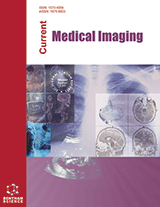
Abstract
Background: Magnetic Resonance Imaging (MRI) data acquisition includes several sequences that might be optimized to reduce the scan time.
Objective: This study aimed to investigate the impact of gadolinium chelate administration timing on scan duration and image quality in Diffusion-weighted Imaging (DWI) and T2-weighted Imaging (T2WI) during abdominal MRI examinations.
Methods: A prospective study was conducted from October 2018 to May 2020. Study participants were assigned into a conventional group, undergoing MRI with DWI and T2WI sequences pre and post-gadolinium injection, or an optimized group, receiving MRI with DWI and T2WI sequences after gadolinium injection. Quantitative image quality, measured by the Signal-to-noise Ratio (SNR), Contrast-to-noise Ratio (CNR), and Apparent Diffusion Coefficient (ADC), was analyzed. Kappa statistics were employed for the inter-observer agreement on liver lesion detection.
Results: Our study has included 341 patients, with 168 and 173 in the conventional and optimized groups, respectively. Mean scan durations were 1,304 (±143) and 1,015 (±129) s for the conventional and optimized groups, respectively (p<0.05). For the liver, spleen, and pancreas, SNR and ADC remained statistically unchanged in post-enhanced DWI and T2WI (p>0.05). Significant decreases in the SNR and ADC of the kidney were observed in post-contrast DWI and T2WI (p<0.05). Hepatic lesion detectability did not show significant differences between pre and post-contrast DWI and T2WI images (p>0.05).
Conclusion: DWI and T2WI sequences assessed post-gadolinium administration exhibited shortened scan time without compromising the image quality for liver, spleen, and pancreas evaluations. However, these sequences should be examined before gadolinium administration when assessing the kidneys.
Keywords: Magnetic resonance imaging, Hepatic images, Kidney images, Diffusion-weighted imaging, T2-weighted images, Gadolinium.











